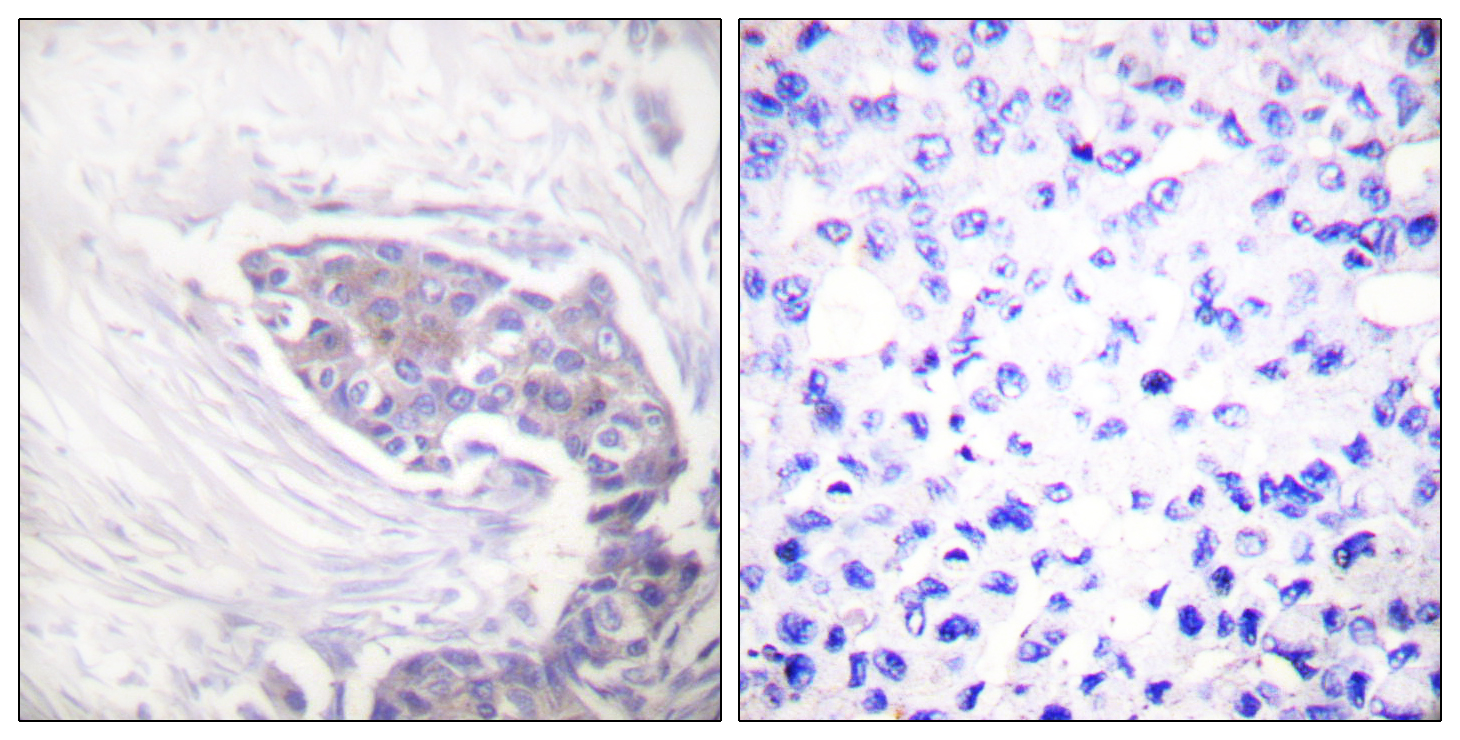TrxR2 Polyclonal Antibody
- Catalog No.:YT4752
- Applications:WB;IHC;IF;ELISA
- Reactivity:Human;Mouse;Rat
- Target:
- TrxR2
- Fields:
- >>Selenocompound metabolism;>>Pathways in cancer;>>Hepatocellular carcinoma
- Gene Name:
- TXNRD2
- Protein Name:
- Thioredoxin reductase 2 mitochondrial
- Human Gene Id:
- 10587
- Human Swiss Prot No:
- Q9NNW7
- Mouse Gene Id:
- 26462
- Mouse Swiss Prot No:
- Q9JLT4
- Rat Gene Id:
- 50551
- Rat Swiss Prot No:
- Q9Z0J5
- Immunogen:
- The antiserum was produced against synthesized peptide derived from human TRXR2. AA range:471-520
- Specificity:
- TrxR2 Polyclonal Antibody detects endogenous levels of TrxR2 protein.
- Formulation:
- Liquid in PBS containing 50% glycerol, 0.5% BSA and 0.02% sodium azide.
- Source:
- Polyclonal, Rabbit,IgG
- Dilution:
- WB 1:500 - 1:2000. IHC 1:100 - 1:300. ELISA: 1:10000.. IF 1:50-200
- Purification:
- The antibody was affinity-purified from rabbit antiserum by affinity-chromatography using epitope-specific immunogen.
- Concentration:
- 1 mg/ml
- Storage Stability:
- -15°C to -25°C/1 year(Do not lower than -25°C)
- Other Name:
- TXNRD2;KIAA1652;TRXR2;Thioredoxin reductase 2; mitochondrial;Selenoprotein Z;SelZ;TR-beta;Thioredoxin reductase TR3
- Observed Band(KD):
- 56kD
- Background:
- thioredoxin reductase 2(TXNRD2) Homo sapiens This gene encodes a member of the class I pyridine nucleotide-disulfide oxidoreductase family. The encoded protein is a selenocysteine-containing flavoenzyme that maintains thioredoxins in a reduced state, thereby playing a key role in regulating the cellular redox environment. Mammals have three related thioredoxin reductases. This gene encodes a mitochondrial form important for scavenging of reactive oxygen species in mitochondria. Alternatively spliced transcript variants encoding different isoforms have been described. [provided by RefSeq, Sep 2013],
- Function:
- catalytic activity:Thioredoxin + NADP(+) = thioredoxin disulfide + NADPH.,cofactor:FAD.,function:Maintains thioredoxin in a reduced state. Implicated in the defenses against oxidative stress. May play a role in redox-regulated cell signaling.,miscellaneous:The active site is a redox-active disulfide bond. The selenocysteine residue is essential for enzymatic activity.,sequence caution:Translated as Sec.,similarity:Belongs to the class-I pyridine nucleotide-disulfide oxidoreductase family.,subunit:Homodimer.,tissue specificity:Highly expressed in the prostate, ovary, liver, testis, uterus, colon and small intestine. Intermediate levels in brain, skeletal muscle, heart and spleen. Low levels in placenta, pancreas, thymus and peripheral blood leukocytes. According to PubMed:10608886, high levels in kidney, whereas according to PubMed:9923614 levels are low.,
- Subcellular Location:
- Mitochondrion .
- Expression:
- Highly expressed in the prostate, ovary, liver, testis, uterus, colon and small intestine. Intermediate levels in brain, skeletal muscle, heart and spleen. Low levels in placenta, pancreas, thymus and peripheral blood leukocytes. According to PubMed:10608886, high levels in kidney, whereas according to PubMed:9923614, levels are low. High expression is observed in the adrenal cortex (PubMed:24601690).
- June 19-2018
- WESTERN IMMUNOBLOTTING PROTOCOL
- June 19-2018
- IMMUNOHISTOCHEMISTRY-PARAFFIN PROTOCOL
- June 19-2018
- IMMUNOFLUORESCENCE PROTOCOL
- September 08-2020
- FLOW-CYTOMEYRT-PROTOCOL
- May 20-2022
- Cell-Based ELISA│解您多样本WB检测之困扰
- July 13-2018
- CELL-BASED-ELISA-PROTOCOL-FOR-ACETYL-PROTEIN
- July 13-2018
- CELL-BASED-ELISA-PROTOCOL-FOR-PHOSPHO-PROTEIN
- July 13-2018
- Antibody-FAQs
- Products Images

- Western Blot analysis of various cells using TrxR2 Polyclonal Antibody. Secondary antibody(catalog#:RS0002) was diluted at 1:20000
.jpg)
- Western Blot analysis of HT29 cells using TrxR2 Polyclonal Antibody. Secondary antibody(catalog#:RS0002) was diluted at 1:20000

- Immunohistochemistry analysis of paraffin-embedded human breast carcinoma tissue, using TRXR2 Antibody. The picture on the right is blocked with the synthesized peptide.

- Western blot analysis of lysates from HT29 cells, using TRXR2 Antibody. The lane on the right is blocked with the synthesized peptide.



